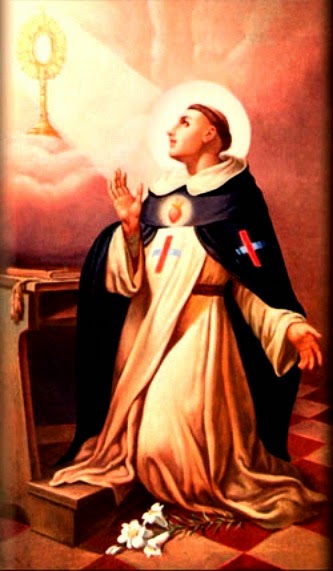The Presentation of the Lord: Candlemas
The Feast of the Presentation, often called Candlemas, commemorates the purification of the Blessed Virgin Mary and the presentation of Christ in the temple, which took place 40 days after his birth as Jewish law required. According to Mosaic law, a mother who had given birth to a boy was considered unclean for seven days. Also, she was to remain 33 days "in the blood of her purification." Luke tells us, quoting Exodus 13:2,12, that Mary and Joseph took Jesus to Jerusalem because every firstborn child was to be dedicated to the Lord. They also went to sacrifice a pair of doves or two young pigeons, showing that Mary and Joseph were poor. Once in the temple, Jesus was purified by the prayer of Simeon, in the presence of Anna the prophetess. Simeon, upon seeing the Messiah, gave thanks to the Lord, singing a hymn now called the Nunc Dimittis:
Lord, now you let your servant go in peace,
your word has been fulfilled:
My own eyes have seen the salvation,
which you have prepared in the sight of every people:
a light to reveal you to the nations
and the glory of your people Israel.
Simeon told Mary, "Behold, this child is set for the fall and rising of many in Israel, and for a sign that is spoken against, (and a sword will pierce through your own soul also), that thoughts out of many hearts may be revealed." Simeon thus foreshadowed the crucifixion and the sorrows of Mary at seeing the death of her Son.
The name Candlemas comes from the activities associated with the feast. It came to be known as the Candle Mass. In the Western Church, a procession with lighted candles is the distinctive rite. According to post Vatican-II discipline, (if possible) the beeswax candles are to be blessed somewhere other than where the Mass is held. Often your local parish will hand out candles, or you may bring your own, to be blessed before the procession. These may be saved for later use in your home. After an antiphon, during which the candles held by the people are lighted, there is a procession into the church. During the procession to the church, the Nunc Dimittis is sung, with the antiphon "Lumen ad revelationem" (Luke 2:32). This procession into the church for Mass commemorates Christ's entrance into the temple. Since Vatican II, the feast is reckoned a feast of the Lord (as opposed to a feast of Mary), and officially designated "The presentation of the Lord."
History
Egeria, writing around AD 380, attests to a feast of the Presentation in the Jerusalem Church. It was kept on February 14th. The day was kept by a procession to the Constantinian basilica of the Resurrection, with a homily on Luke 2:22-39. However, the feast had no proper name at this point; it was simply called the 40th day after Epiphany. This shows that the Jerusalem church celebrated Jesus' birth on the Epiphany Feast (as is common in some Eastern Churches today).
In regions where Christ's birth was celebrated on December 25th, the feast began to be celebrated on February 2nd, where it is kept in the West today. In 542, the Emperor Justinian introduced the feast to the entire Eastern Roman empire in thanksgiving for the end to a great pestilence afflicting the city of Constantinople. Perhaps this is when Pope Gregory I brought the feast to Rome. Either way, by the 7th century, it is contained in the Gelasianum Sacramentary. Pope Sergius (687-701) introduced the procession to the Candlemas service. The blessing of candles did not come into common use until the 11th century.
While some scholars have asserted that the Candlemas feast was developed in the Middle Ages to counteract the pagan feasts of Imbolc and Lupercalia, many scholars reject this, based on Medieval documents. While the feast does coincide with these two pagan holidays, the origins of the feast are based in Scriptural chronology. Some superstitions developed about Candlemas, including the belief that if one does not take down Christmas decorations by Candlemas, traces of the holly and berries will bring about the death of the person involved. In past times, Candlemas was seen as the end of the Christmas season.
Candlemas Day was also the day when some cultures predicted weather patterns. Farmers believed that the remainder of winter would be the opposite of whatever the weather was like on Candlemas Day. An old English song goes:
If Candlemas be fair and bright,
Come winter, have another flight;
If Candlemas bring clouds and rain,
Go winter, and come not again.
Thus if the sun cast a shadow on Candlemas day, more winter was on the way; if there was no shadow, winter was thought to be ending soon. This practice led to the folklore behind "Groundhog's Day," which falls on Candlemas Day.
Today, the feast is still celebrated on February 14th in some Eastern Churches, including the Armenian Church, where the feast is called, "The Coming of the Son of God into the Temple." Most churches celebrate it on February 2nd.
Learn more about the Candlemas Ceremony.





Comments
Post a Comment
Comments are moderated and are published at the blogger's discretion.